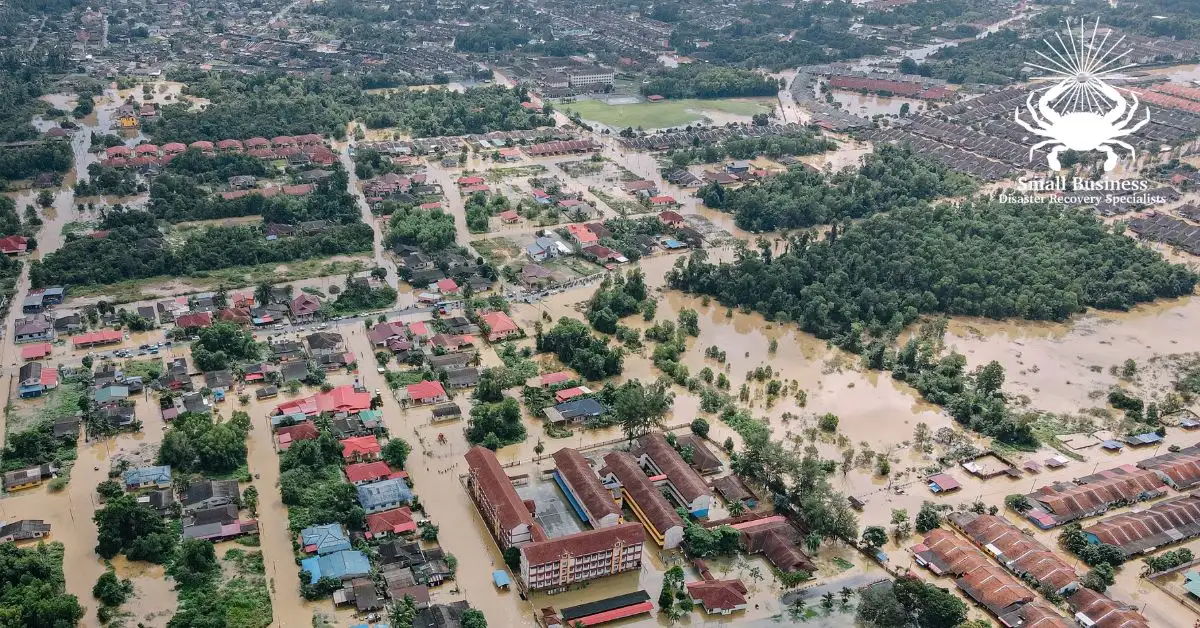Disasters can strike at any moment, and without proper preparation, they can have devastating consequences for small businesses. Whether it’s a natural disaster like a hurricane or flood, a cyberattack or a wildfire, having a comprehensive disaster recovery plan in place is essential for ensuring business continuity and minimizing downtime. In this blog post, the Small Business Disaster Recovery Specialists provide small business owners with an essential guide to creating a disaster recovery plan to safeguard their operations and mitigate risks.
Assess Risks and Vulnerabilities
The first step in creating a disaster recovery plan is to assess your business’s risks and vulnerabilities. Identify potential threats, such as natural disasters, cyberattacks, equipment failure or supply chain disruptions, and evaluate their potential impact on your business operations. Consider factors such as location, industry and historical data to prioritize risks and focus your efforts on areas of greatest concern.
Establish Clear Objectives and Goals For Your Plan
Define clear objectives and goals for your disaster recovery plan, outlining what you aim to achieve and how you will measure success. Determine your tolerance for downtime and data loss, and establish recovery time objectives (RTOs) and recovery point objectives (RPOs) to guide your planning efforts. Set realistic targets based on your business needs, resources and capabilities.
Develop a Comprehensive Recovery Plan
Develop a comprehensive disaster recovery plan that outlines step-by-step procedures for responding to different types of emergencies. Include protocols like these:
- employee safety and communication
- data backup and recovery
- IT infrastructure recovery
- business continuity measures
Assign responsibilities to key personnel and ensure that everyone understands their roles and knows what to do in the event of a disaster.
Backup Business Data Regularly
Data loss can be catastrophic for small businesses, leading to financial loss, reputational damage and legal liabilities. Implement a robust data backup strategy to protect your critical business data and ensure quick recovery in the event of a disaster. Backup your data regularly, both onsite and offsite, using secure and reliable backup solutions. Test your backups regularly to verify their integrity and accessibility.
Secure IT Infrastructure
Cyberattacks are a growing threat to small businesses, with hackers targeting sensitive data and IT systems for financial gain. Take proactive measures to secure your IT infrastructure and protect against cyber threats, such as malware, ransomware and phishing attacks. Implement strong cybersecurity measures, including these:
- Firewalls;
- Anti-virus software;
- Intrusion detection systems;
- Employee training programs, to raise awareness about cyber threats.
Test and Update Your Disaster Plan Regularly
A disaster recovery plan is only effective if it’s regularly tested and updated to reflect changes in your business environment and evolving threats. Conduct regular drills and exercises to simulate different disaster scenarios and evaluate the effectiveness of your plan. Identify areas for improvement and make necessary updates to ensure that your plan remains current, relevant and effective in mitigating risks and ensuring business continuity.
All in all, creating a disaster recovery plan is essential for small businesses to protect against unforeseen emergencies and ensure business continuity in the face of adversity. Small business owners can mitigate risks and safeguard their operations by completing these tasks:
- assessing risks and vulnerabilities
- establishing clear objectives and goals
- developing a comprehensive plan
- backing up data regularly
- securing IT infrastructure
- testing and updating the plan regularly
At Small Business Disaster Recovery Specialists, we specialize in helping small businesses create customized disaster recovery plans tailored to their unique needs and requirements. Contact us today to learn more about our services and start protecting your business against disasters. Visit https://smallbusinessdrs.com/ to learn more.



